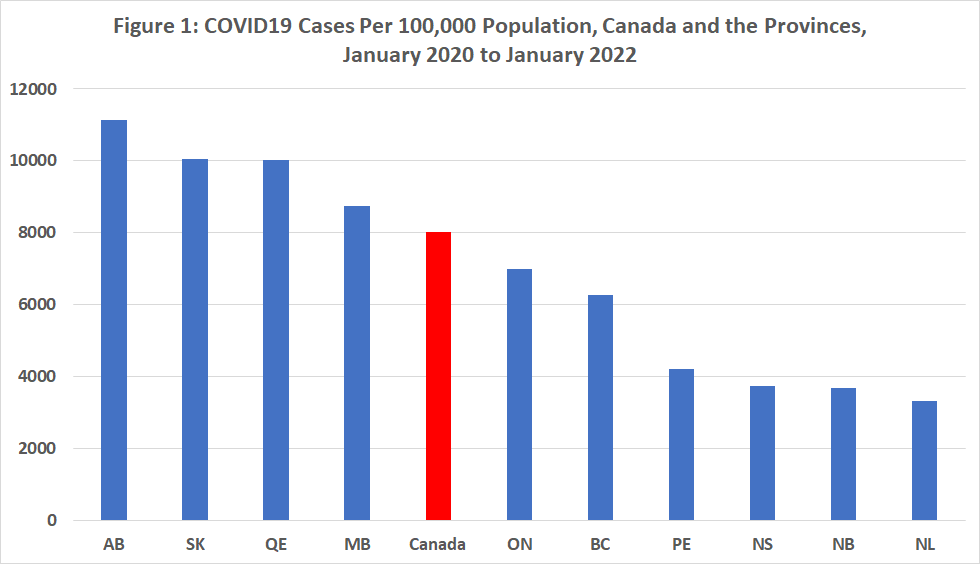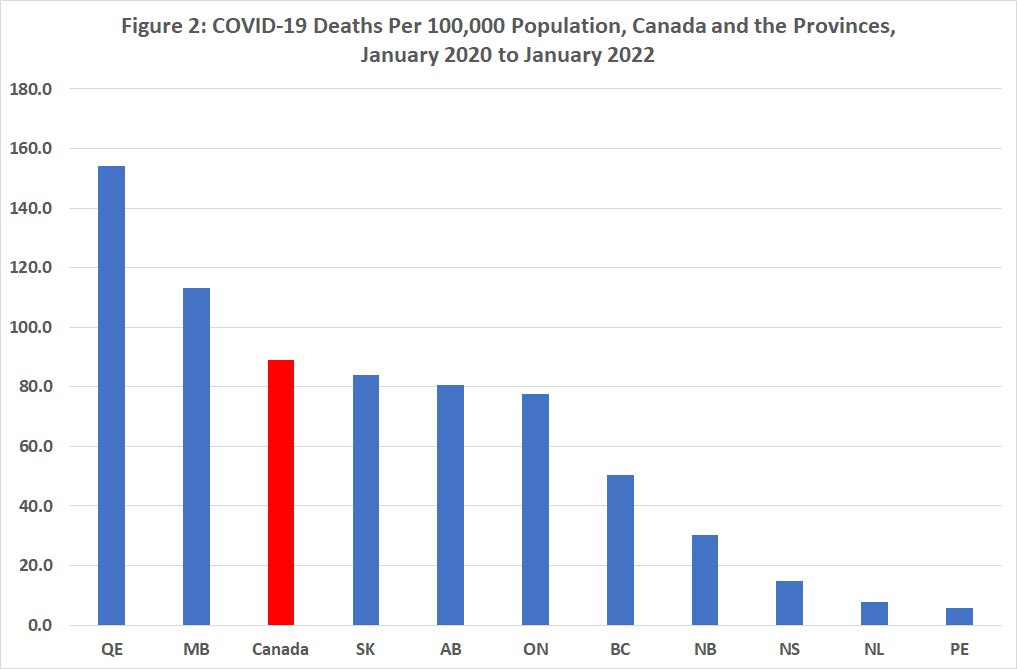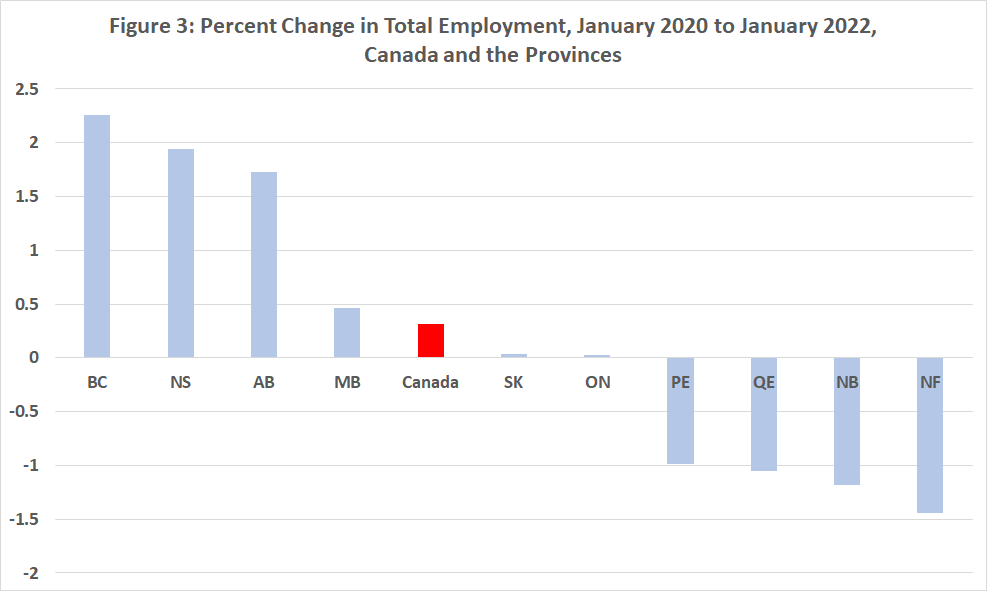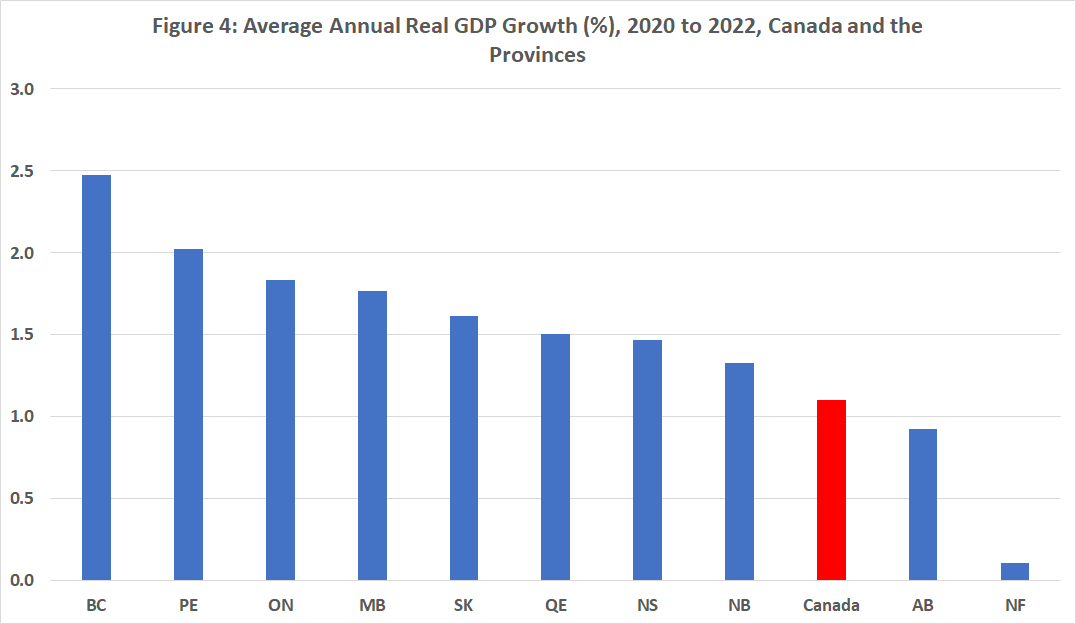COVID fallout—a provincial breakdown of the numbers

Of course, Canada was not immune from the enormous disruption of the pandemic with estimated real GDP in 2020 shrinking by 5.2 per cent, and with growth projections now at 4.6 per cent in 2021, 3.9 per cent in 2022 and 2.8 per cent in 2023. The two years from January 2020 to January 2022 started with the most precipitous fall in economic activity since the Great Depression raising the risk of deflation, then a rapid rebound and finally economic recovery extending into 2022.
We since have also experienced a boom marked by excess demand, the lowest unemployment rate in nearly five decades, inflation, a housing price rise, travel chaos, and now rising interest rates.
All provinces were affected by COVID-19 and the measures instituted to manage it, though some weathered the storm better than others at certain points during the pandemic depending in part on the size of the virus surge in each province and economic effects of the restrictions imposed. For example, in 2020 the hardest hit economy was Alberta with an estimated 8 per cent real GDP drop followed by Quebec and Newfoundland and Labrador each falling by more 5 per cent, then Ontario at about 5 per cent.
The Atlantic provinces and British Columbia, on the other hand, were hit less hard with real GDP drops of between 3 per cent and 4 per cent. The subsequent estimated GDP rebounds in 2021 were greatest in Quebec, B.C. and Ontario at more than six per cent respectively followed by Alberta, Saskatchewan and New Brunswick at more than 5 per cent.
After over two years of the pandemic, it’s useful to look at some overall comparisons to see how the pandemic affected the provinces in terms of incidence and mortality, and some of the economic effects.
The first two charts below summarize the impact of the virus in terms of cases and deaths. The first chart presents total COVID-19 cases per 100,000 population for each province for the entire period from January 2020 to January 2022 while the second chart repeats for deaths per 100,000 population. In terms of incidence, the pandemic hit Alberta, Saskatchewan, Quebec and Manitoba the hardest while the four Atlantic provinces were least affected. Ontario and B.C. were in the middle of the distribution. When it comes to mortality from the pandemic, the ranking shows a large range with deaths per 100,000 population highest in Quebec at 154 per 100,000 people and lowest in Prince Edward Island at 5.6. The four Atlantic provinces were again together at the bottom.


In terms of economic impacts, charts three and four present rankings on total employment growth and real GDP growth over the course of two pandemic years. The third chart shows that over the January 2020 to January 2022 period, monthly employment grew the most in B.C. at more than 2 per cent followed by Nova Scotia and Alberta at less than 2 per cent. There was a significant drop in growth rates with Manitoba, Saskatchewan and Ontario showing growth below half a per cent and the remaining provinces—P.E.I., Quebec, New Brunswick, and Newfoundland and Labrador still below where they were two years previous.


As for real GDP growth, the average annual growth rate for the 2020 to 2022 period is estimated at a high of more than 2 per cent for B.C. followed closely by P.E.I., and then Ontario. The lowest average annual growth is for New Brunswick, Alberta, and Newfoundland and Labrador.
In terms of drawing conclusions about which province fared the best or worst overall during the pandemic, it appears the results are quite mixed. The incidence of COVID-19 was the highest in Alberta, Saskatchewan and Quebec. Alberta has managed a more robust employment recovery while Quebec did not, but at the same time Quebec’s average annual real GDP growth appears higher than Alberta’s and its deficit situation was far superior. The four Atlantic provinces, which together established the Atlantic bubble, all quite successfully managed to perform well on COVID-19 incidence and mortality relative to the other provinces, but this did not always translate into better economic performance, except for Nova Scotia in terms of employment and P.E.I. in terms of real GDP growth. Oddly, higher economic growth during the pandemic did not appear to uniformly translate into higher employment growth.
Then there’s B.C., which was mid-ranked in terms of COVID-19 incidence and mortality but appears to have led the pack in terms of employment growth and real GDP growth. On the other hand, Ontario, which was also mid-ranked in terms of COVID-19 incidence and mortality, had a flat employment result over the two years, but ranked high on real GDP growth.
If there’s a province with the secret to managing a pandemic and getting relatively good economic and fiscal results, it is likely to lie on Canada’s coasts—take your pick of B.C. or Nova Scotia. Perhaps a bracing dose of salty sea air is the key to both good health and good economic policy.
Author:
Subscribe to the Fraser Institute
Get the latest news from the Fraser Institute on the latest research studies, news and events.

